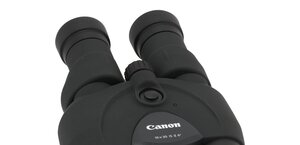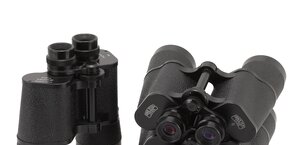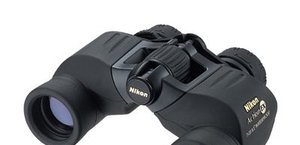History of Zeiss 10x40 binoculars– from the beginning of the twentieth century to contemporary times
1. Historical 10x40 and 10x42 models
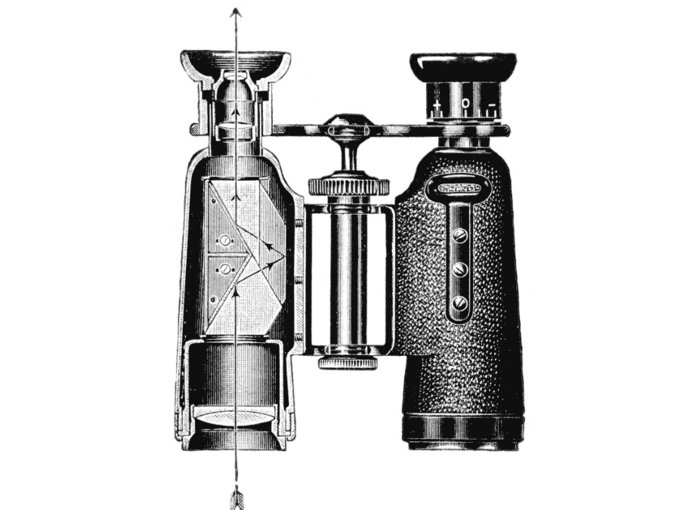 Hensoldt Dialyt binoculars announced in 1905. |
The WWII complicated that situation. Zeiss Jena factories found themselves in the Soviet occupation zone which forced the part of the company situated in the Western Germany to start over almost from scratch. In 1946 they created Opton Optische Werke Oberkochen GmbH in Oberkochen which, one year later, was renamed to Zeiss-Opton Optische Werke Oberkochen GmbH and then called simply Carl Zeiss. A construction of a new factory, designing new models and implementing their production is a time-consuming process so the first pair of binoculars produced in Oberkochen was launched only in 1954 – it was the Porro prism 8x30 model.
Please Support UsIf you enjoy our reviews and articles, and you want us to continue our work please, support our website by donating through PayPal. The funds are going to be used for paying our editorial team, renting servers, and equipping our testing studio; only that way we will be able to continue providing you interesting content for free. |
- - - - - - - - - - - - - - - - - - - - - - - - - - - - - - - - - - - - - - - - - - - - - - - -
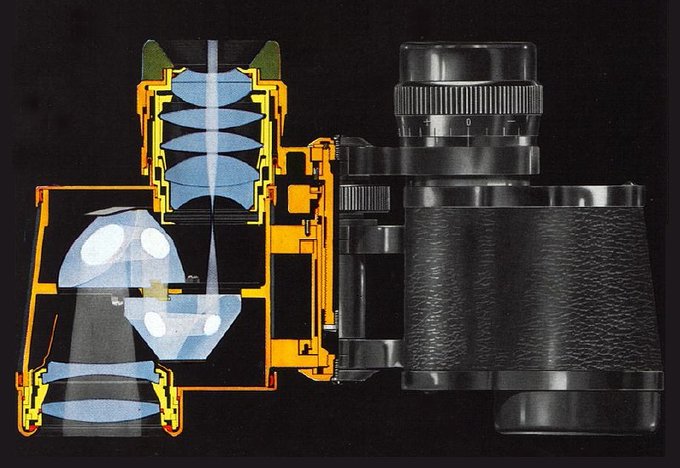 Porroprismatic Carl Zeiss 8x30 binoculars from 1954. |
In fact for the first ten years the West German Zeiss produced only Porro binoculars and they launched overall nine models (these were, in chronological order: the 8x30, the 6x30, the 7x50, the 8x50, the 10x50, the 8x30 B, the 15x60, the 8x50 B, and the 7x50 B/GA). In 1964, however, the first roof prisms Zeiss device was shown on the market - the Carl Zeiss Dialyt 8x30 B. Three years later that series was enlarged by the Carl Zeiss Dialyt 8x30 B/GA. There were many changes introduced in that model, not only a rubber armour – in fact it was a completely different optical construction with eyepieces featuring a slightly narrower field of view. 1968 was the year of two other launches of roof prism models like the Carl Zeiss Dialyt 8x56 B/GA with Abbe- Koenig prisms and the Carl Zeiss Dialyt 10x40 B, one of main heroes of this essay.
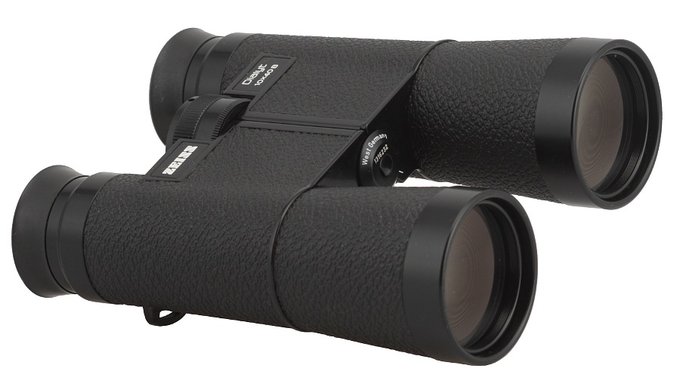 Carl Zeiss Dialyt 10x40 B - a specimen of the beginning of the 70s of the 20th century. |
It was a brilliant construction at that time, physically light and handy, with a very good apparent field of view, amounting to 6.3 degrees. It meant that with the 10x magnification the apparent field of view of eyepieces was as wide as 63 degrees – a noticeable jump forward when you compared that construction to other Dialyts. After all the 8x30 B models had eyepieces with fields of view amounting to 55 and 59 degrees and the field of the 8x56 was just 50 degrees. What’s more, that wide field didn’t adversely affected the eye relief distance which was 15 mm; the binoculars could be used even by people wearing glasses.
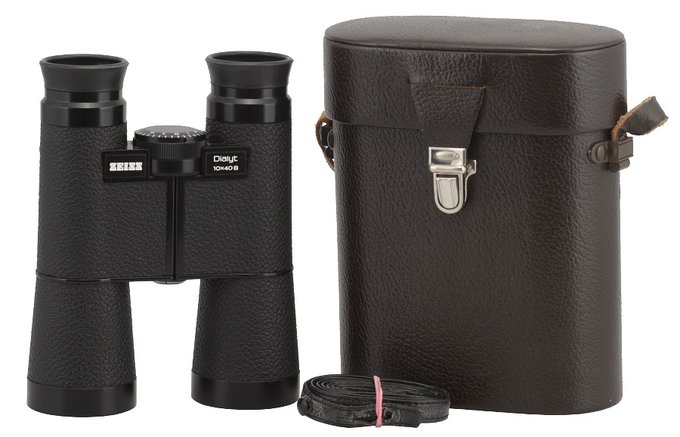 Carl Zeiss Dialyt 10x40 B - a specimen of the beginning of the 70s of the 20th century. |
The optical construction of the Dialyt 10x40 B consisted of a classic achromat objective lens (a cemented doublet), Schmidt-Pechan prisms and a 5-element eyepiece. Even though the binoculars featured central focusing system it lacked a focusing element known from contemporary instruments; the focusing was done through the movement of the entire barrel chamber with the objective lens.
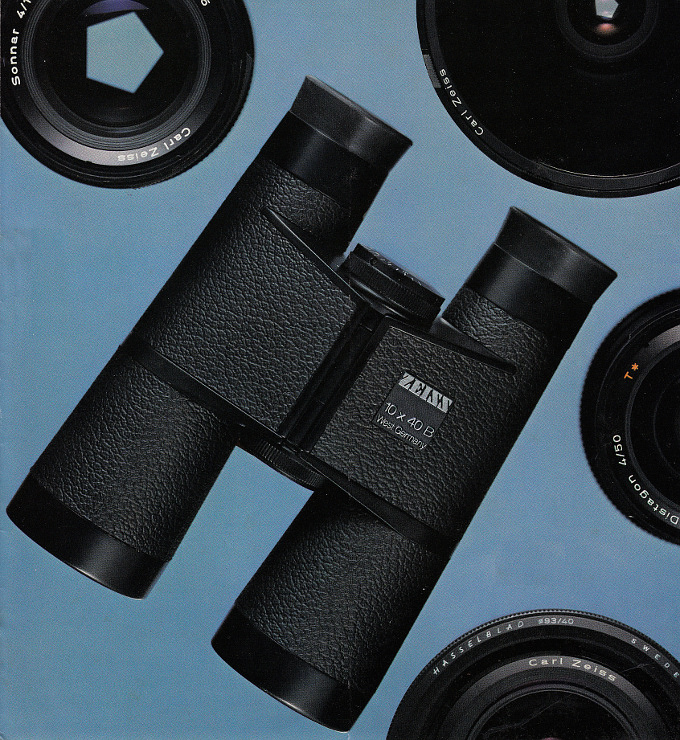 A page from the 1980s Carl Zeiss catalogue presenting the Dialyt 10x40 B T*. |
Of course when the binoculars were launched on the market there were only single-layer T coatings available and the reflective surface on the prisms was covered by aluminum. Phase correction coating was also a matter of the future development so, as you can imagine, the transmission of such a pair of binoculars couldn’t be especially high. By the way you don’t have to speculate about its level because we managed to measure it.
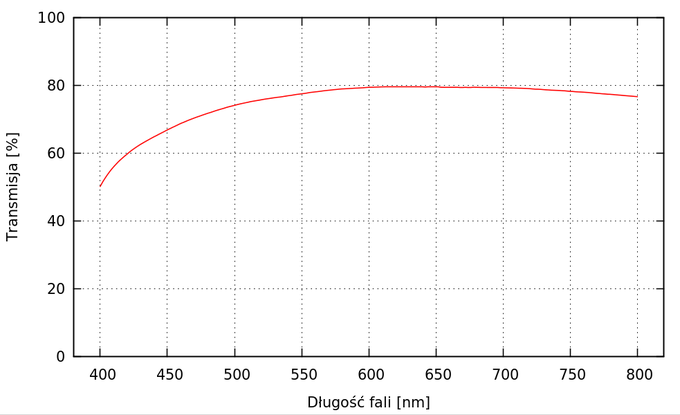 Transmission of the Zeiss Dialyt 10x40 B binoculars. |
You see a quite flat graph from 550 to 800 nm where the values get to almost 80% at the maximum. Such a level is nothing strange – without high quality dielectric coatings on the prisms and with simple one-layer coatings on the elements it would be impossible to achieve something better.
The 70s of the twentieth century brought slight changes in the casing construction and the introduction of T* multi-layer coating (1979). At the same time a set of binoculars in rubber armour, marked as B/GA T* was launched on the market.
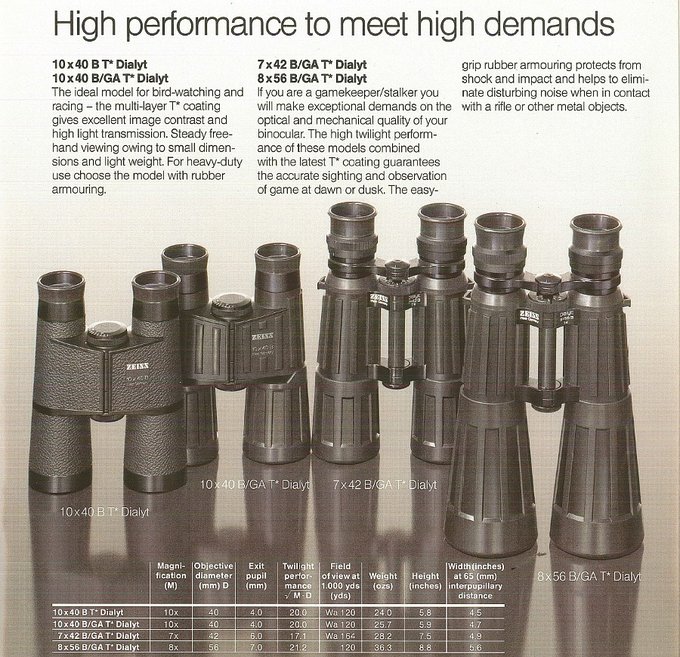 A page from the 1983 Zeiss catalogue presenting among other things the Dialyt 10x40 B T* and the Dialyt 10x40 B/GA T*. |
Also the following decade didn’t bring any changes in the optical construction but you cannot say there was no significant improvement. In 1988 phase correction coatings P* were introduced and in the photo below you see the Dialyt 10x40 from that period exactly. What’s interesting, it’s actually one of the first specimen with phase correction coating covering the prisms. As you can notice the casing wasn’t modified yet so it still lacks the P* sign but it can be found on the packaging of the binoculars.
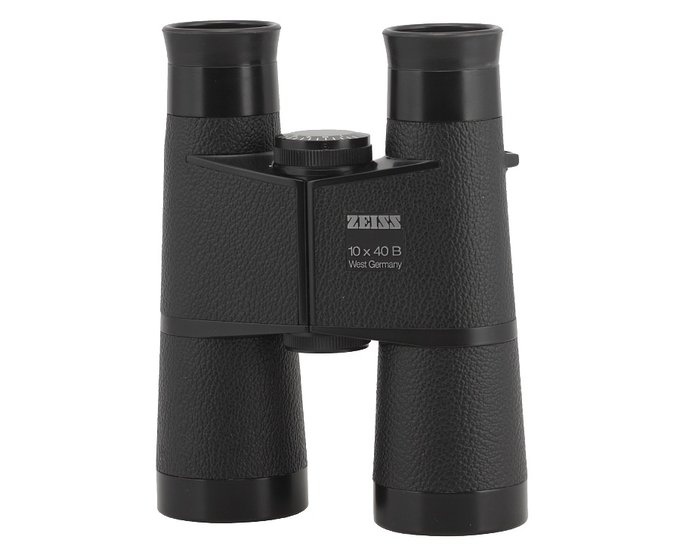 Carl Zeiss Dialyt 10x40 B T* P* - a specimen from 1988. |
We managed to measure the transmission level of this model as well; its graph is presented below.
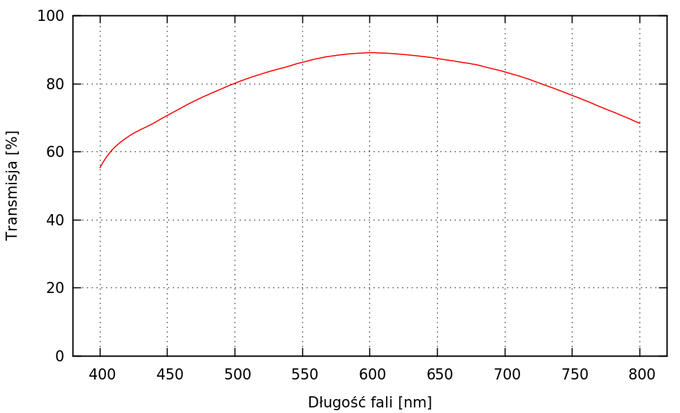 Transmission of the Zeiss Dialyt 10x40 B T* P* binoculars. |
The result is higher this time, more than less than 80% we got in the case of its predecessor. The transmission near 600 nm wavelength reaches close to 90%. What’s interesting, the colour rendering of the newer model seems to be a tad worse than that of the older version with inferior coatings.
In the 90s of the twentieth century when the Zeiss Design Selection series was launched, the older binoculars got ClassiC element in their names. The good, old Dialyt 10x40 B finished its market career at the very end of the 20th century as a model with a quite long name: the Carl Zeiss Dialyt 10x40 B/GA T* P* ClassiC.
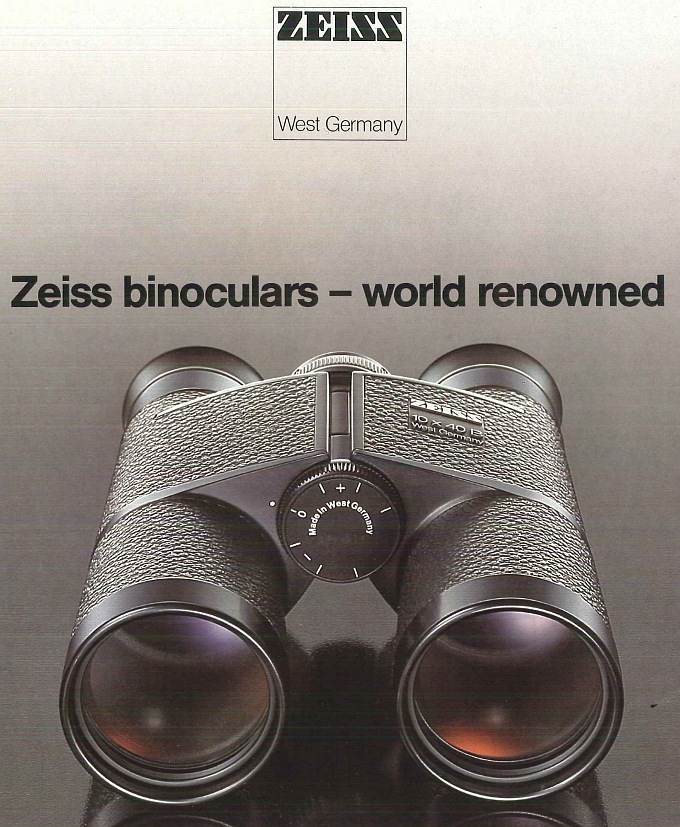 Front page of the 1983 Zeiss catalogue presenting the Carl Zeiss Dialyt 10x40 B T*. |
Meanwhile in 1996, celebrating the 150th anniversary of the Zeiss company, a limited edition of binoculars called the Zeiss Dialyt 10x40 B ClassiC Gold was launched, counting less than one thousand of specimens. Its retail price was 3395 USD – quite exhorbitant. It was due to 18-karat gold the Zeiss company logo was made of and golden rings around eyepieces and objectives. Additionally the binoculars had exclusive, brown leather finishing and buyers got a special case made of brown leather as well.
2000 brought very serious changes. After over 30 years of market presence of the classic Dialyt the producer finally shows its successor, designed completely anew. I think of course about the Carl Zeiss Victory 10x40 B T*. The objective lens features a 4-element superachromat instead of the classic achromat. The prisms are changed as well – this time you get efficient Abbe-Koenig ones, which use total internal reflection principle. Still the field of view remains the same: you still deal with a wide field of 6.3 degrees. It is also worth mentioning that the 10x40 model was launched along with the 8x40 instrument with a field of view of 7.7 degrees.
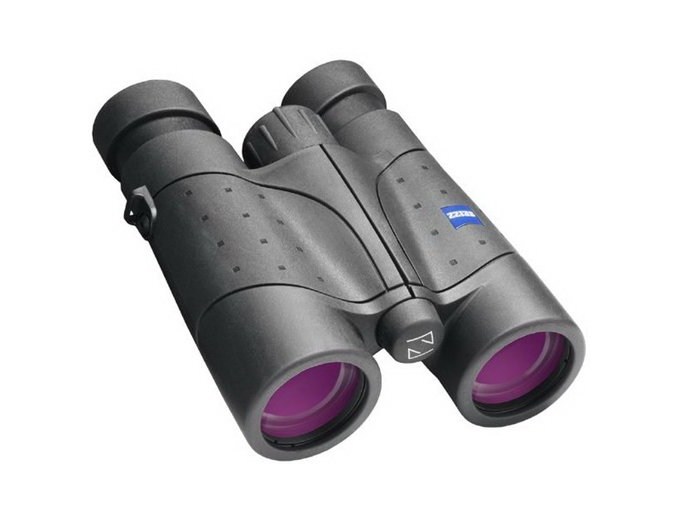 Carl Zeiss Victory 10x40 B T* produced at the very beginning of the 21st century. |
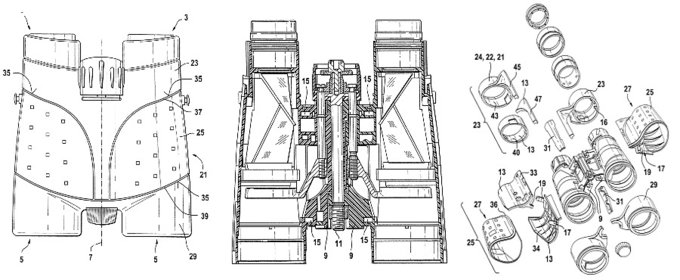 The casing of the Carl Zeiss Victory 10x40 B T* taken from the Zeiss patent application no US6499594B1 issued in 1999. |
Still the new pair of binoculars was not nearly as popular as the Dialyt. Despite the complex objective construction the users complained about too high level of chromatic aberration and weak performance against bright light. Some reservations concerned the casing which was slightly modified by Zeiss later.
 A Zeiss leaflet from the beginning of the 21st century, advertising the Victory series. |
Perhaps the fact that the Victory 10x40 B T* wasn’t a spectacular market hit was one of main reasons why it remained on the shelves for just less than four years. It’s also possible that at the turn of centuries the Zeiss philosophy changed as well – the company finally reached a point where they were willing to implement a sales model based on at least two line-ups at distinctively different price points.
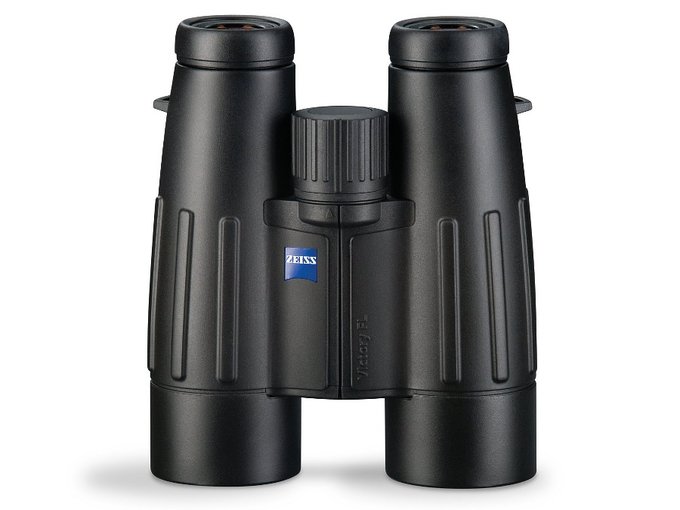 The Carl Zeiss Victory 10x42 FL T* which was launched in February 2004. |
In February 2004 a quite new series of binoculars called Victory T* FL was presented, consisting of three models with the following parameters: 7x42, 8x42 and 10x42. The price was the proof you dealt with instruments way better than the previous Victory 8x40 and 10x40 models – the suggested retail price tag of the Victory 10x40 B T* right after its launch reached 1200 USD but a bit later you could buy it for 925-950 USD. The Carl Zeiss Victory 10x42 T* FL hit the shelves with a suggested price of 1930 USD so it was practically two times more expensive than its predecessor!
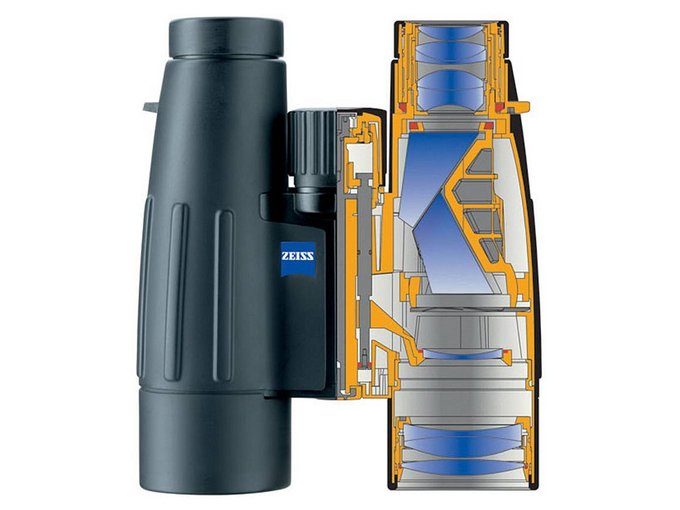 Optical construction of the Carl Zeiss Victory 8x42 FL T* |
What the buyers got for that price? The objective lens remained the same – a 4-element superachromat – but special fluorite glass element with low dispersion (FL) was added to it. There were Abbe Koenig prisms, offering the highest light transfer. A wide angle eyepiece with five elements was added to that but the producer didn’t decide to improve the field of view; the new Victory 10x42 FL T* featured a field of 6.3 degrees, exactly the same as its two predecessors. The casing of the lens was made of plastics reinforced with fiber glass (60%) and aluminum. It was nitrogen purged, submersible (400 mbar) and could work in temperatures ranging from -30 to +63 degrees Centigrade. The binoculars came in two colours: black and green.
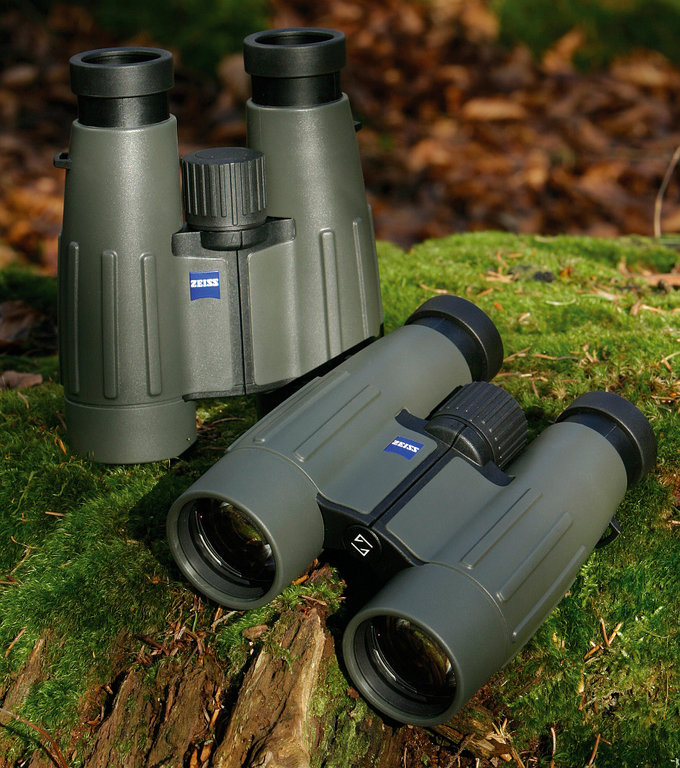 Green Carl Zeiss Victory FL T* binoculars. |
Of course all air-to-glass surfaces were covered by top-of-the-range multi-layer T* coating and prisms were phase correction P* coated. Since 2007 the binoculars got also LotuTec hydrophobic coating which repels water and makes cleaning of the outer elements easier.
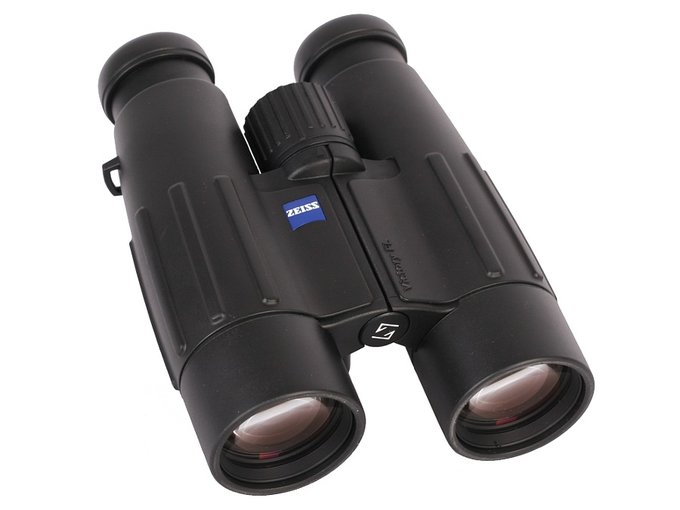 The Carl Zeiss Victory 10x42 FL T* which was launched in February 2004. |
How does that technology work in practice? The transmission graph of the Victory 8x42 FL T* model, shown below, is the answer.
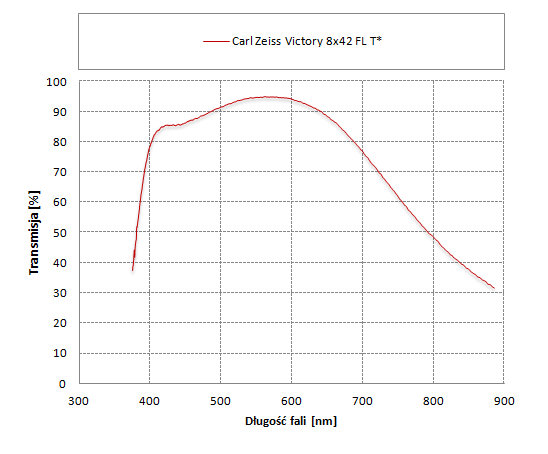 |
It is clear that in the middle of the visible spectrum the binoculars provide even 93-94% of light – it is an excellent result! What’s more, the transmission reaches near 85% even for blue and purple light. Some contemporary roof prism binoculars have problems with achieving such a result at the peak of their possibilities.
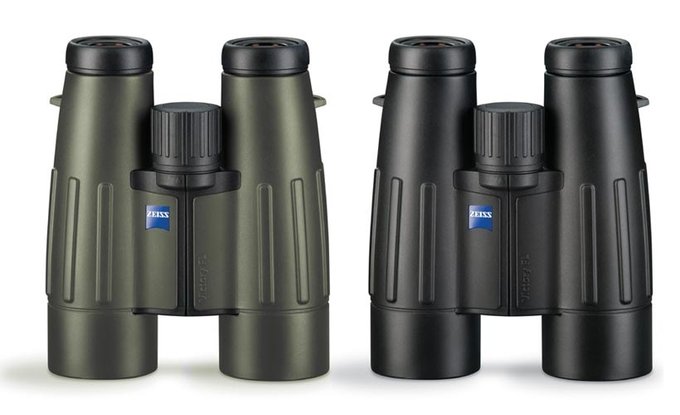 Carl Zeiss Victory FL T* in both colour versions. |
We’ve already mentioned that in the nineties of the twentieth century Zeiss started to think of price differentiation of their products. The launch of the Diafun series, produced in Hungary, was the first signal of that tactics. The 8x30 model debuted in 1997 and two years later the 10x30 appeared on the market. Their production ceased in 2002 because there was another series looming on the horizon, new, rather cheap for Zeiss and also produced in Hungary. It was called Conquest, was launched in 2003 and the 8x30 and the 10x30 models started it; they substituted the Diafuns which weren’t especially popular, appearing with some bigger 12x45 and 15x45 models as well.
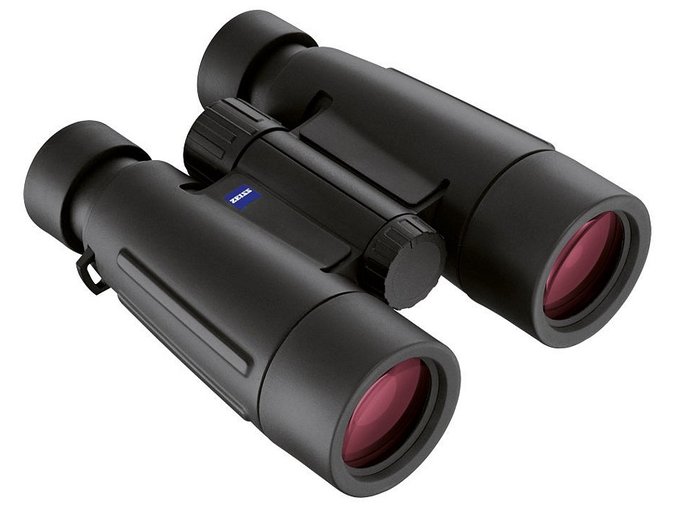 The Carl Zeiss Conquest 10x40 T* produced in 2005-2012. |
In March 2005 the Conquest series was enlarged by two more pairs of binoculars, the 8x40 and the 10x40. Contrary to the 30 and 45 mm models, with Schmidt- Pechan prisms, the 40 mm devices featured better Abbe-Koenig prisms. Despite that fact the Conquests were about half as expensive as the corresponding Victory FL models. Still they were heavier, their optical construction was simpler (a classic achromat in the objective lens) and they featured a narrower field of view (e.g. the Conquest 10x40 had a field of view amounting to 6.0 degrees so by 0.3 of a degree narrower than that of the Victory FL) and a bit less resistant casing (the temperature range of the Conquests was -20 to +55 degrees Centigrade). The place of production differed as well – the Victory FL were produced in Germany while the Conquests were made in Hungary.
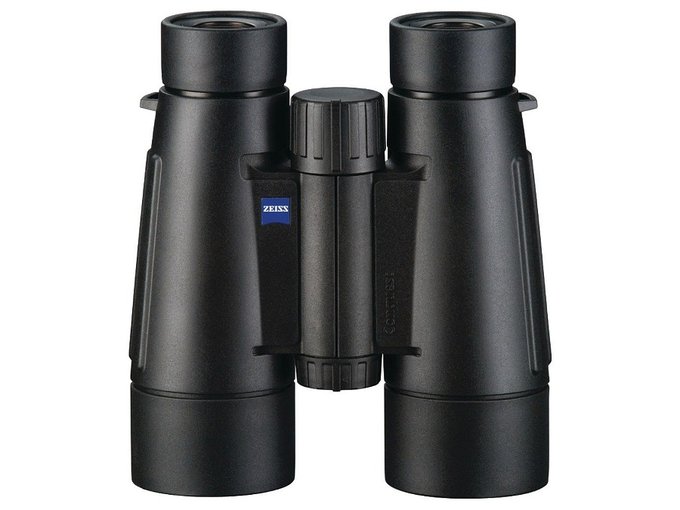 The Carl Zeiss Conquest 10x40 T* produced in 2005-2012. |
The production of the Carl Zeiss Conquest 10x40 T* model ceased near 2011-2012. One year later its older and more expensive brother, the Victory 10x42 FL T* started to disappear from the marked as well. The last specimens could be bought brand new in 2014 but currently they aren’t available in shops. Both binoculars made room for as many as four new 10x42 Zeiss models which are the core of that company’s line-up. We think here of course about the Zeiss Victory SF, the Zeiss Victory HT, the Zeiss Conquest HD and the Zeiss Terra ED. Still it is a topic for quite another story.
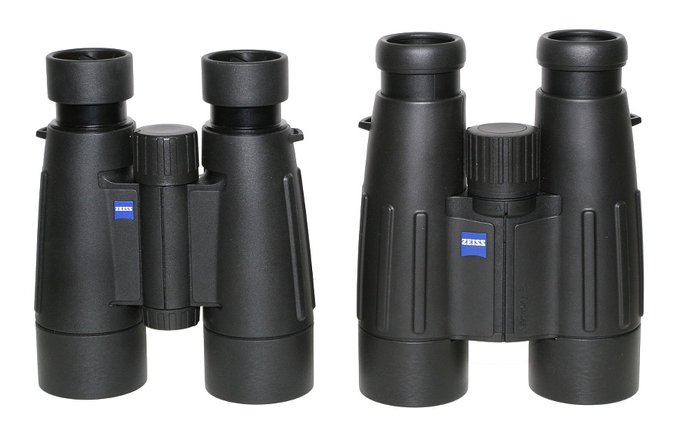 The Carl Zeiss Conquest 10x40 T* and Carl Zeiss Victory 10x42 FL T* binoculars. |
This article was written with the cooperation of the MK Szuster company.
The author would like to thank Brin Best and Holger Merlitz for their help with gathering materials.





